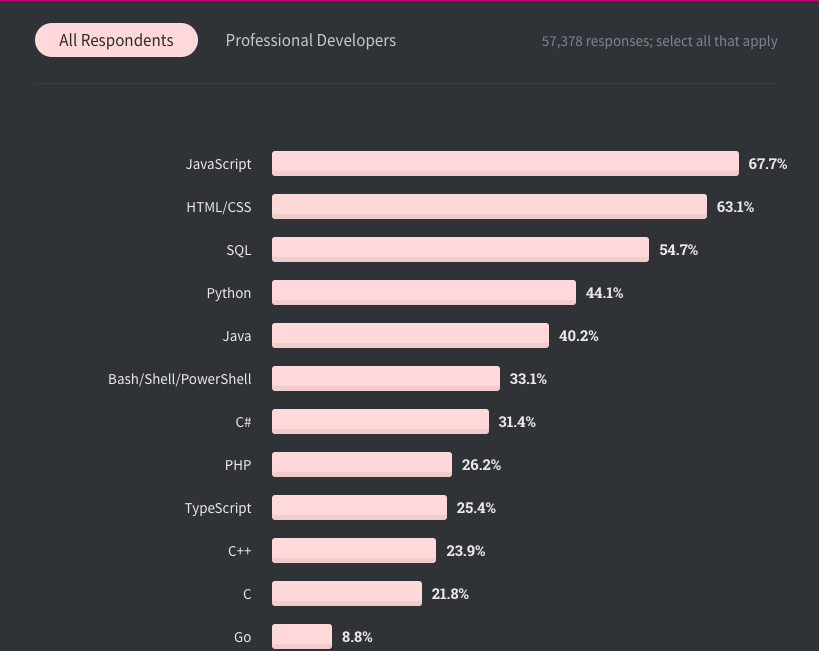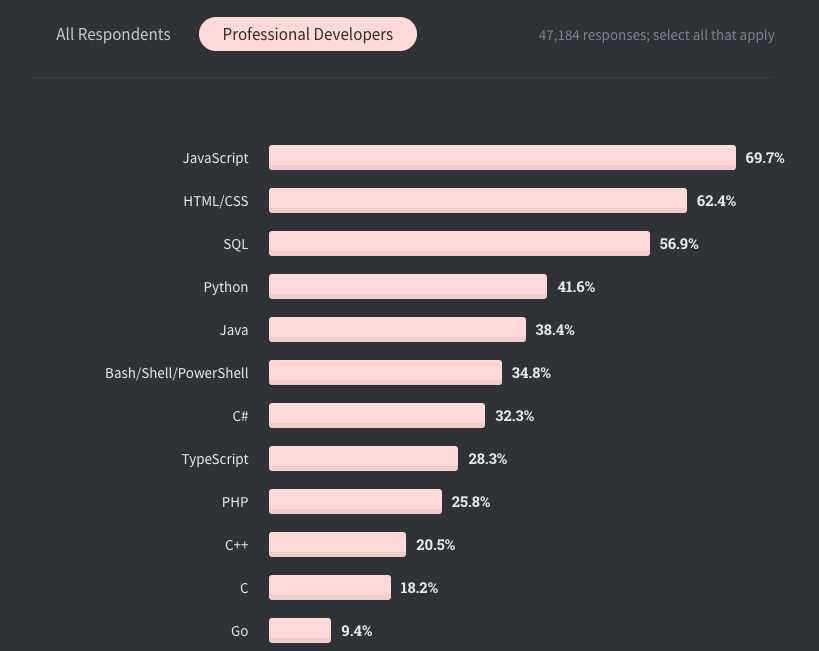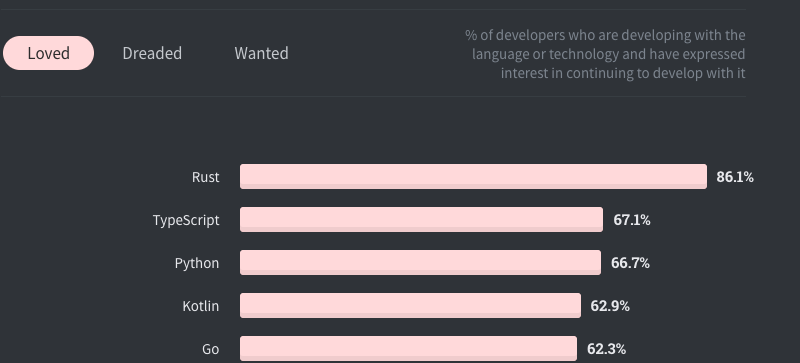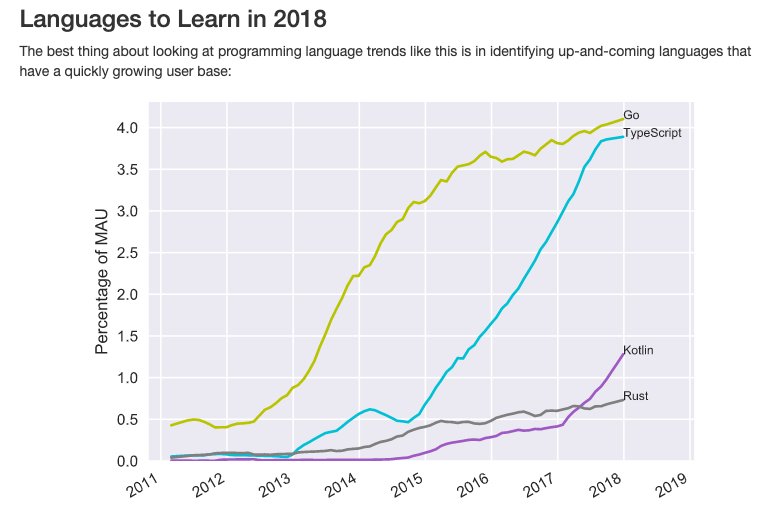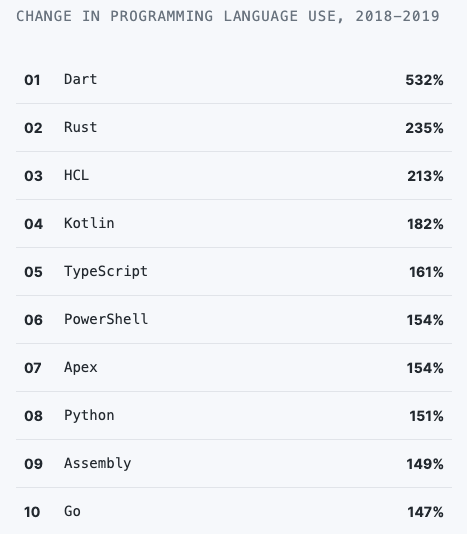What is Golang?
Go is a programming language released in 2009, which makes it way younger than Python or Java. One of its main advantages is simplicity. With Golang, you won't spend time on any unnecessary features, but will rather focus on delivering functional code. This, in turn, means that other developers will have no problems understanding your code if they end up working on it as well. Additionally, Go's syntax is clean so the code is easy to read.
As far as its popularity, Go is currently no. 11 in the TIOBE index, and a year ago it was no. 17. Additionally, in Github's the State of the Octoverse survey, Go made the list of the fastest growing languages, which also proves that the language is gaining fans.
This rise in popularity can be attributed to a number of reasons. On top of the aforementioned simplicity and readability, Go was designed by Google, which adds to its legitimacy. It's a good choice for microservices architecture. Because it's statically typed, bugs are easier to detect. Finally, the language is used in data science.
If you're looking for a simple programming language that's a good alternative to the most popular choices, definitely give Go a try.


